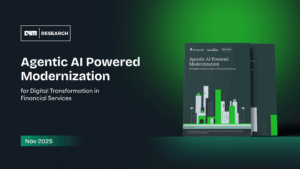The integration of Environmental, Social, and Governance (ESG) principles and cloud computing has become increasingly important in today’s business landscape. As companies strive to improve their ESG performance, cloud technology offers a range of benefits that can help them achieve their sustainability goals. Cloud computing can reduce environmental impact, increase energy efficiency, and enhance governance frameworks and security practices. This article explores the relationship between ESG performance and cloud computing, highlighting the opportunities and challenges that arise from their convergence. By understanding the potential of cloud technology in improving ESG data and contributing to environmental sustainability, organizations can make informed decisions about adopting cloud solutions and integrating them into their ESG strategies.
The environmental cost of the usage of AI, computational power, and cloud computing is a critical consideration for Tech Companies Like Google and Microsoft but as end users traditional companies should also need to start thinking how AI and Cloud computing usage plays into their ESG Commitments. Cloud computing, while offering efficiency and resilience, requires vast amounts of electricity to power the servers and keep them cool, contributing to environmental impact. The environmental impact of cloud computing is significant, with data centers responsible for about 1.8% of U.S. electricity consumption and a plurality of tech companies’ emissions. However, cloud computing also has the potential to significantly reduce the environmental impact of IT, offering opportunities for organizations to align their cloud strategies with ESG goals. Cloud transformation can aid ESG goals by helping reduce the impact of IT footprint on the environment and by providing visibility and transparency for ESG reporting. Cloud infrastructure providers, especially hyperscalers, have been active in developing plans and initiatives focusing on the environmental impact of their infrastructure, with efforts to increase energy efficiency and use renewable energy. Therefore, traditional companies should be mindful of the environmental implications of AI, computational power, and cloud computing in the context of their ESG performance, and consider integrating sustainable practices into their IT strategies.
How will companies measure their AI Usage?
The environmental impact of AI usage is a growing concern, with recent studies shedding light on the significant energy consumption and carbon emissions associated with AI tasks. For example, a study by researchers at Hugging Face and Carnegie Mellon University found that generating an image using a powerful AI model consumes as much energy as fully charging a smartphone, while using an AI model to generate text is significantly less energy-intensive, consuming only as much energy as 16% of a full smartphone charge for 1,000 prompts. The study also highlighted that the carbon footprint of AI models is not only due to their training, but also their actual use, emphasizing the need to consider the environmental impact of ongoing AI operations. Furthermore, the direct environmental impact of AI is primarily related to the physical infrastructure it requires, including data centers, processors, and other specialized computing hardware. The energy demand from AI is particularly significant, with predictions suggesting that AI servers could consume between 85 to 134 terawatt hours (Twh) annually by 2027, which is comparable to the electricity usage of an entire country. This energy consumption is largely driven by training massive AI models, with the language learning side of AI being particularly energy-intensive. These findings underscore the need for companies to carefully consider the environmental implications of their AI initiatives and take steps to minimize the energy consumption and carbon emissions associated with AI usage. By optimizing AI systems, using renewable energy, and developing more energy-efficient AI algorithms, companies can align their AI strategies with their ESG goals and contribute to a more sustainable future.
While cloud computing offers efficiency and resilience, it requires vast amounts of electricity to power the servers and keep them cool, contributing to environmental impact. In fact, the cloud now has a greater carbon footprint than the airline industry, with a single data center consuming the equivalent electricity of 50,000 homes. However, it’s important to note that cloud computing also has the potential to significantly reduce the environmental impact of IT. For instance, cloud service providers can leverage economies of scale to achieve higher energy efficiency, reduce waste, and utilize renewable energy sources. To address the environmental impact of cloud computing, companies are increasingly focusing on optimizing their cloud usage to reduce its environmental impact. This includes efforts to increase energy efficiency, use renewable energy, and reduce the complexity of AI models to minimize energy consumption. For example, some cloud providers have committed to using 100% renewable energy for their data centers, and have developed AI systems to predict and optimize energy demand, thereby reducing their overall environmental footprint. By considering factors beyond just cost, companies can better understand and manage the environmental implications of their cloud usage and its contribution to global energy usage. This holistic approach is essential for companies to align their cloud strategies with their ESG goals and contribute to a more sustainable future.
ESG Considerations in Cloud and AI Services
As companies prioritize ESG (Environmental, Social, and Governance) considerations, addressing the energy issue associated with cloud and AI computation has become a key focus. The environmental impact of cloud and AI services is increasingly being factored into the selection of cloud and AI providers. For instance, organizations are recognizing that by choosing the right cloud and AI provider, they can gain visibility into and help reduce the impact of their IT footprint on the environment. This is exemplified by the World Economic Forum’s projection that the switch to cloud computing is expected to prevent at least 629 million metric tons of CO2 from being emitted between 2020 and 2023. Additionally, the environmental impact of cloud and AI services can be compared using ESG scores, which are measured on a scale of 0-100 and provide a 360-degree view of ESG metrics across various providers. These scores shed light on the environmental impact of different cloud infrastructure vendors, enabling organizations to assess and compare their impact on the environment when making provider selections. Therefore, as companies strive to integrate sustainability and ESG goals into their cloud and AI strategies, the environmental impact of these services will play a significant role in provider selection and ongoing management.
In conclusion, as businesses increasingly prioritize Environmental, Social, and Governance (ESG) principles, the intersection of cloud computing and artificial intelligence (AI) becomes a focal point for sustainable strategies. While acknowledging the environmental impact of cloud and AI services, companies are navigating this landscape by integrating ESG considerations into provider selections and ongoing management. The commitment to reducing CO2 emissions through cloud adoption, coupled with the emergence of ESG scores for environmental assessment, underscores a concerted effort towards informed and environmentally responsible decision-making. As traditional industry leaders recognize the significance of their IT footprint, the synergy between ESG goals and technological advancements presents an opportunity for transformative change, paving the way for a more sustainable future.
This article is written by a member of the AIM Leaders Council. AIM Leaders Council is an invitation-only forum of senior executives in the Data Science and Analytics industry. To check if you are eligible for a membership, please fill out the form here.





